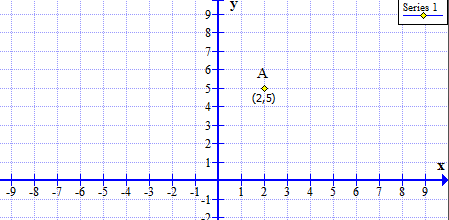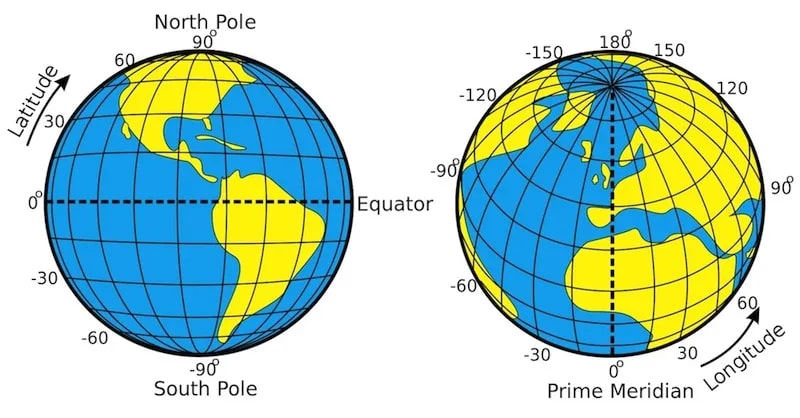The number “243.35972222/2.76365554” might appear to be just a series of numbers, but it represents coordinates, most likely geographical ones, and could correspond to a specific place on Earth.
If you’re wondering what exactly “243.35972222/2.76365554” means, you’re not alone. Many people encounter coordinates like this and may feel confused about how to interpret them, what they represent, and how they can be used.
This article is a comprehensive guide to understanding these coordinates, their meaning, how they work, and how you can use them for various purposes like navigation, location tracking, and even scientific research.
What Are Coordinates?

Coordinates are numerical values that represent a specific point on the Earth’s surface. This system of referencing is widely used to pinpoint locations for various purposes, such as travel, research, and mapping. Coordinates are often used in geography, navigation, and even in technology when tracking devices or plotting locations in apps like Google Maps.
The Basics of Coordinates:
Coordinates are most commonly shown in two numbers:
- Latitude: This number shows the north-south position.
- Longitude: This number shows the east-west position.
When you encounter coordinates like “243.35972222/2.76365554,” these two numbers help identify a precise spot on the planet.
Read More: 8882381346 – The Ultimate Toll-Free Number for Assistance!
The Specifics Behind 243.35972222/2.76365554:
Let’s break down the specific coordinates “243.35972222/2.76365554.” Typically, latitude and longitude values range within the following limits:
- Latitude: Between -90 and +90
- Longitude: Between -180 and +180
In the case of “243.35972222/2.76365554,” the numbers appear outside the usual range, indicating there could be an error or that these values need to be adjusted to fit the standard latitude-longitude system. It’s possible that these numbers represent a specific calculation or mathematical input into a different system.
However, assuming they are a set of latitude and longitude coordinates, converting them into the correct range would involve some form of modification or decoding. For example, “243.35972222” might require subtracting a certain number to fall within the typical range.
How to Interpret These Coordinates?
1. Latitude:
Latitude represents the angular distance of a point north or south of the Earth’s equator. It is measured in degrees (°), ranging from -90° to +90°. A positive latitude represents a location in the Northern Hemisphere, while a negative latitude corresponds to the Southern Hemisphere.
2. Longitude:
Longitude represents the angular distance of a point east or west of the Prime Meridian, which is located in Greenwich, England. Longitude values range from -180° to +180°, with positive values representing locations east of the Prime Meridian and negative values for places to the west.
Since the number “243.35972222” exceeds the normal latitude range, it might need to be adjusted before interpreting. Similarly, “2.76365554” seems within the valid range for longitude.
The Use of Coordinates in Everyday Life:
Coordinates like “243.35972222/2.76365554” have many uses in our daily lives, and here are some examples:
- Navigation: Coordinates are vital for GPS devices and map applications, helping you find locations and plot routes.
- Travel: Travelers use coordinates to find destinations in unfamiliar areas.
- Surveying: Land surveyors use them to measure property lines or locate land features.
- Emergency Services: First responders may use coordinates to quickly locate accident scenes or people in distress.
- Science and Research: Geologists and meteorologists often rely on coordinates to track environmental changes and geological activity.
The Global Coordinate System: Latitude and Longitude Explained:
The Earth is divided by a grid system made up of horizontal lines (parallels) and vertical lines (meridians). This grid helps us understand how latitude and longitude work together to specify a location.
1. Latitude Lines:
- The Equator is at 0° latitude and divides the Earth into the Northern and Southern Hemispheres.
- The North Pole is at +90° latitude, while the South Pole is at -90° latitude.
2. Longitude Lines:
- The Prime Meridian (0° longitude) runs from the North Pole to the South Pole through Greenwich, England.
- Locations to the east of the Prime Meridian have positive longitude values, while locations to the west have negative values.
How to Convert 243.35972222/2.76365554 Into More Familiar Terms?
If “243.35972222” and “2.76365554” are interpreted as longitude and latitude, respectively, it would require adjusting the values into the correct range for practical use. Since “243.35972222” exceeds the maximum possible latitude, it may need to be converted to a longitude or represent another coordinate system.
Here’s a potential approach to conversion:
- Longitude Interpretation: We could subtract 180 from “243.35972222” to normalize it within the longitude range.
- Latitude Interpretation: Since “2.76365554” falls within normal latitude range, we can assume it represents a valid latitude.
Through these steps, the coordinates might become more interpretable within the commonly used geographical system.
Finding Locations Using 243.35972222/2.76365554:
Once you have the correct latitude and longitude values, you can input these coordinates into map services like Google Maps, Apple Maps, or a GPS device to find the corresponding location. Using coordinates is often the most precise method to find an exact location, especially in remote areas where addresses might not be available.
Steps to Use Coordinates in Google Maps:
- Open Google Maps on your phone or desktop.
- In the search bar, enter the coordinates in this format: “latitude, longitude” (e.g., “2.76365554, -243.35972222”).
- Press Enter, and the map will display the location corresponding to the coordinates.
GPS Systems and Their Relevance to Coordinates:
GPS (Global Positioning System) technology relies on coordinates to accurately track and display locations. This system is used worldwide in cars, phones, and even airplanes to help people navigate.
How GPS Works?
- GPS devices communicate with satellites that are orbiting Earth.
- These satellites send signals to the GPS device, which then calculates the exact location of the device based on the coordinates.
- The coordinates are used to provide real-time location information.
Coordinates like “243.35972222/2.76365554” are critical in GPS operations, even though they may need adjusting before use.
Understanding Geographic Tools for Coordinates:

There are many tools and software that help with understanding and using coordinates. Here are some common ones:
- Google Earth: This is a great tool for visualizing coordinates on a global scale.
- GPS Devices: GPS devices from brands like Garmin help you find locations using coordinates.
- Coordinate Converter Websites: These websites help convert degrees, minutes, and seconds (DMS) format to decimal degrees and vice versa.
Decimal Degrees vs. Degrees, Minutes, Seconds (DMS):
Coordinates can be represented in different formats:
- Decimal Degrees (DD): This is the format like “243.35972222/2.76365554.”
- Degrees, Minutes, Seconds (DMS): This is another popular format. For example, the coordinate “51.5074 N, 0.1278 W” (London) would be written as “51°30’26.64″N, 0°07’40.08″W” in DMS format.
Read More: BNSF Workforce Hub – Boost Your Work Efficiency Now!
Coordinates in Modern Technology:
Coordinates play a huge role in various modern technologies. Beyond just navigation, they are used in:
- Mobile apps: Apps like Uber, Lyft, and DoorDash rely on coordinates to match users with nearby drivers or couriers.
- Augmented Reality (AR): Some AR applications use coordinates to create immersive, location-based experiences.
- Drone Navigation: Drones use coordinates to fly autonomously to specific points.
How Accurate Are Coordinates Like “243.35972222/2.76365554”?
The accuracy of coordinates depends on the number of decimal places used. The more decimal places in a coordinate, the more precise the location.
For example, coordinates with four decimal places (e.g., “51.5074 N”) can pinpoint a location within approximately 10 meters, while coordinates with more decimal places (e.g., “51.50742109 N”) can pinpoint an even more specific location within just a few centimeters.
Factors Affecting Accuracy:
- Signal Interference: Urban areas with tall buildings can block GPS signals.
- Atmospheric Conditions: Weather can also affect signal accuracy.
- Device Quality: Higher-quality GPS devices provide more accurate coordinates.
Frequently Asked Questions (FAQs):
1. What does “243.35972222/2.76365554” mean?
These are likely coordinates that specify a location on Earth, but they may need to be adjusted to fit standard latitude and longitude ranges.
Q2. How do I use coordinates on my smartphone?
You can enter coordinates in the format “latitude, longitude” into map applications like Google Maps to find the specific location.
3. Are all coordinates in decimal format?
No, coordinates can also be represented in degrees, minutes, and seconds (DMS) format.
4. What should I do if coordinates seem incorrect?
If coordinates don’t fit the standard range, they might need adjusting. Consider checking for errors in input or conversion.
5. Can I trust GPS coordinates?
Generally, GPS coordinates are accurate, but various factors like signal interference and device quality can affect their precision.
Conclusion:
In summary, the coordinates “243.35972222/2.76365554” represent a unique point on Earth that may need adjustments for practical use. Understanding how to interpret, use, and analyze coordinates is essential in today’s technologically driven world.
By exploring the significance of coordinates, their applications, and their role in our daily lives, we gain insight into a fascinating aspect of geography and technology.
Read More:





